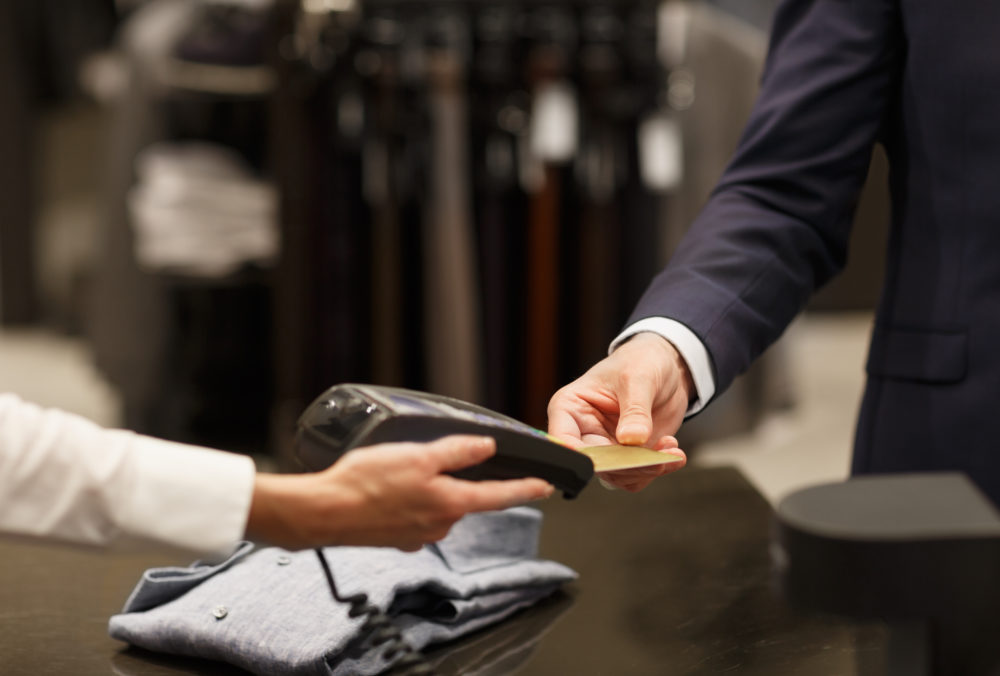Security at the Point of Sale

Akin to the helm of the retail ship, the Point of Sale is one of the most important areas of any store environment.
It’s the place where customer service and sales unite, the gathering point for information and, ideally the central position where sales associates can monitor all the action on the floor. It also contains some of retail’s most valuable assets – the cash drawer, customer data, and security items like keys.
Here’s an insight into the two-sided role that the Point of Sale plays in retail loss prevention and how you can better secure this seminal retail space.
The Point of Sale
Since the dawn of retail, the collection point for cash has been one of the most critical areas of any storefront. It’s traditionally the position from which the watchful purveyor overseas their domain, tending customers when required, overseeing their stock against theft, and accessing high-value displays.
The retail landscape may have changed over the years, but the point of sale area still maintains much of this function, playing a central role in facilitating transactions and customer service, while warding off retail shrink.
POS and store layout
Correct positioning of the point of sale has long been attributed to reducing retail shrink. It allows staff to have full vision of all areas of the shop or department while manning and guarding the register.
But by nature, retail requires sales associates to interact with their customer, which means the point of sale cannot be tended 24/7, allowing it to become a target of retail theft, and occasionally that theft may even occur at the hands of staff.
So, here’s what you need to consider…
Securing the POS
With more and more retail outlets opting for tablets that act as a Point of Sale, retailers should be mindful of how easily the device itself may be targeted. And should that device be taken, it’s not just the value of the tablet, but the consumer data within it that is at stake.
That’s why a secure tablet stands is a must when it comes to securing this device. Solutions include lockable countertop stands, wall mounted tablet enclosures, freestanding enclosures and stands that can pivot or swing on an arm.
And because tablet-style POS terminals are affordable and are linked to the cloud, you can securely position multiple tablets around a retail environment for better customer service.
Meanwhile, general computer security should also be employed, with staff members required to input a code in order to access the POS and make a transaction.
In addition to stopping any would-be thief from accessing data on the POS, staff-specific codes also ensure every transaction a staff member makes is recorded, and this works to reduce fraudulent activity from within the store’s own ranks.
The Point of Sale area
Not only is the physical Point of Sale device valuable, the area around the main counter also incorporates a number of vital retail tools that can have long-term implications if targeted for theft.
These include display keys that may be stored behind the counter, tag detachers, and the cash drawer.
Tag detachers
Used to remove electronic article surveillance (EAS) tags that secure retail merchandise against theft, tag detachers are surprisingly valuable items that are frequently targeted by thieves.
The reason they’re such a popular target is that a tag detacher can allow shoplifters to remove tags in your store and elsewhere, rendering the EAS system ineffective.
All tag detachers should be physically secured or affixed into the countertop.
Cash drawer
It’s no secret the cash drawer is an incredibly valuable item, and as such should be properly affixed into the counter and locked.
Best practice sees cash drawers only open when prompted by a sales transaction or using an authorised staff member code.
Security keys
In retail outlets where lockable glass display cabinets or drawers are used, it’s common practice to store the keys behind the POS counter.
Put bluntly, this is a liability. Should the keyset to your various display counters be stolen, shoplifters can easily target some of your most valuable merchandise for theft.
Instead, retailers might consider the use of smart locks which offer a host of benefits in the fight against retail loss.
Smart locks see keys programmed, rather than cut, to access specific locks within a retail environment. The upshot is, rather than storing multiple keys behind a counter, you can securely allocate a key to any or every member of staff.
The key can even be coded to each specific staff member so they are allowed to access all, some or just one cabinet depending on their jurisdiction.
As a further security measure, smart keys like those by InVue can also keep track of which staff member has accessed what cabinet, when, offering better accountability for staff in terms of both sales and insider theft.
Keys reset automatically on a regular cycle (such as every morning) or can be manually reset should one go missing.
CCTV
As an additional security measure, many retail outlets monitor their POS area with CCTV, which has a number of benefits. CCTV allows you to record staff activity, including any suspicious activity involving transactions and the cash drawer. It can also assist in catching other thieves in and around the POS area.
Securing the POS is an important part of any retail loss prevention strategy and should be considered a priority in every retail environment.
By ensuring the POS is safe, even when it’s not manned, retailers offer an environment where staff can get down to the business of customer service and security takes care of itself.